Data Migration to SAP S/4HANA-The Best Practices
Category: SAP S/4HANA Posted:Aug 02, 2018 By: Robert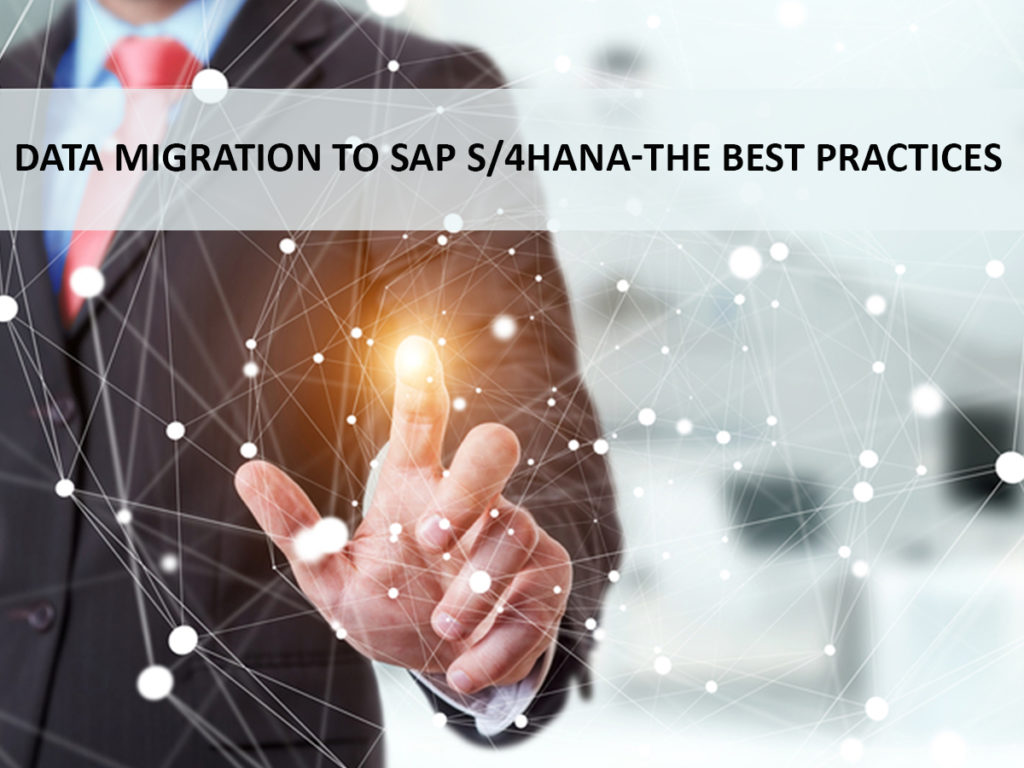
For years SAP S/4HANA has been the most significant contribution provided by SAP. SAP S/4HANA helps the organizations to reduce their functioning IT costs by streamlining their IT landscapes. However, the requirements of every organization may differ. It is essential for an organization to execute an appropriate data migration strategy to speed up their drive towards SAP S/4HANA in a profitable way. It would be a challenging task to transfer the data into SAP S/4HANA, and therefore it is required to have a verified data migration technique. The organization ought to perform data evaluation in their current framework during the planning stage to make a move towards the SAP S/4HANA, with the goal that they can determine how to move, utilize and maintain data. With the assistance of robust data management approach integrated with the planning phase, it is possible for the companies to bring down the risk, keep administrative consistency and to increase the ROI on their migration to SAP S/4HANA.
There are some key points which should be considered at the time of SAP S/4HANA data migration. They are:
1. The standards for the data quality, data mapping, and data conversion should be defined.
2. Recognize the key data stakeholders and their participation through the course of the data migration project.
3. A tool required to mechanize the execution of mapping of data, data transformation, and data quality responsibilities in an organized and successive manner.
4. The initial data migration planning and cleaning, errands should be carried out. The data utilized in the target system, the data uniqueness and the business procedure that it supports, quality of the transferred data which focuses on the four essential factors, i.e. comprehensiveness, consistency, compliance, and conformity.
5. Accomplish the clear data standards and guidelines during the time of data entry in the system.
6. To identify the issues with the data in setting up monitoring and reporting and then taking the necessary action for data remediation.
Learn SAP S/4HANA Simple Finance from Industry Experts
When an organization has to undergo a digital transformation, it is essential to have an appropriate data migration approach. For example, to reach our destination, we need a proper map and a planned route in our journey. Similarly, there should be an adequate technique which should be followed for data migration.
Let us discuss the way to transfer the business data to the recently organized SAP S/4HANA framework. We know that there are three transition scenarios, i.e. new implementation, system conversion, and landscape transformation. Let’s emphasis on the new implementation scenario.
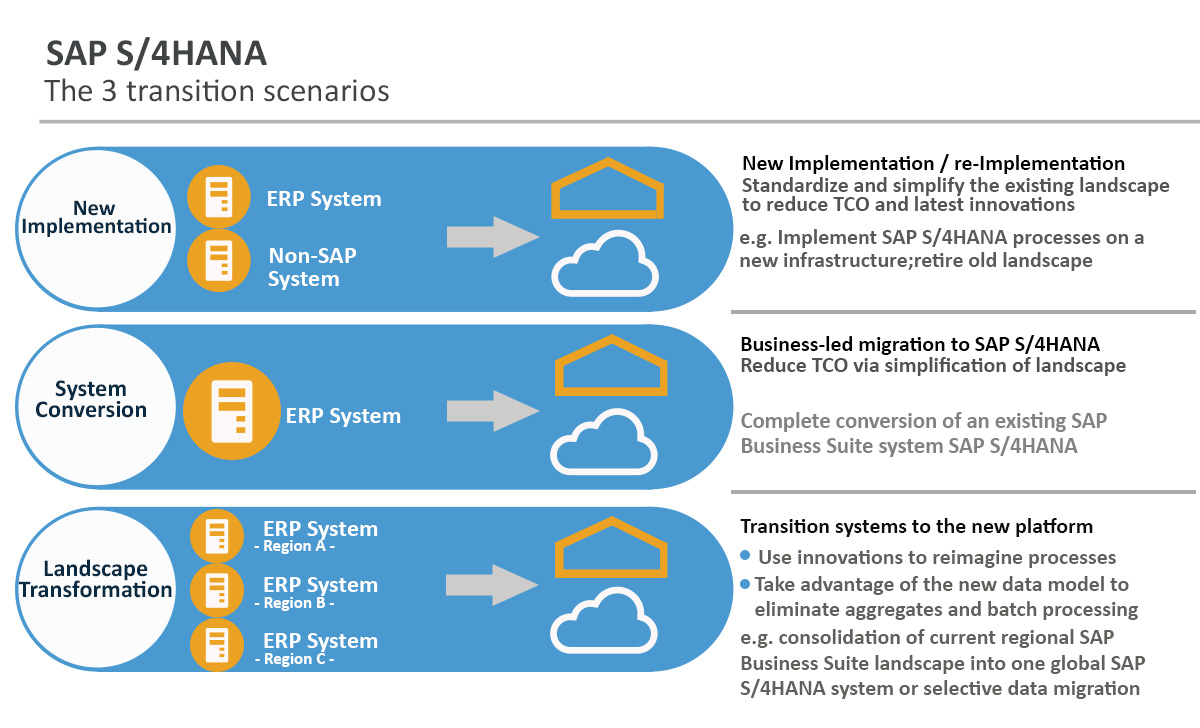
In this scenario, the new SAP S/4HANA framework is organized and transfer the designated data from the legacy system. A legacy system can be an SAP R/3 or an ERP system. Here the focus is given on the business data instead of system data.
SAP S/4HANA on-premise and SAP S/4HANA Cloud are the two unique targets to which the new implementation scenario provides support. Before knowing about the data migration techniques, it is required to understand how the data ought to be set up for the migration.
It is divided into the accompanying stacks:
1. Moving the good quality data to the new transactional framework.
2. Engaging the data of good quality for logical or reviewing requirements.
3. Transferring the data of inferior quality to the new transactional framework.
4. Engaging the poor quality data for logical or reviewing requirements.
5. And the last one is the data which is not in used from quite a while.
Here the data which is to be migrated is incorporated into the stack one and three. In order to carry out data migration, it is required to select the migration tools for this sort of data. Let us now explore the different tools available for the data migration.
SAP S/4HANA Migration Cockpit tool: It is an innovative migration tool for SAP S/4HANA. Initially, it was obtainable for cloud release only, however, now it is offered for on-premise version as well since 1610. The migration object modeler supplements this tool which is a planned tool for improvements and modifications of already defined migration objects.
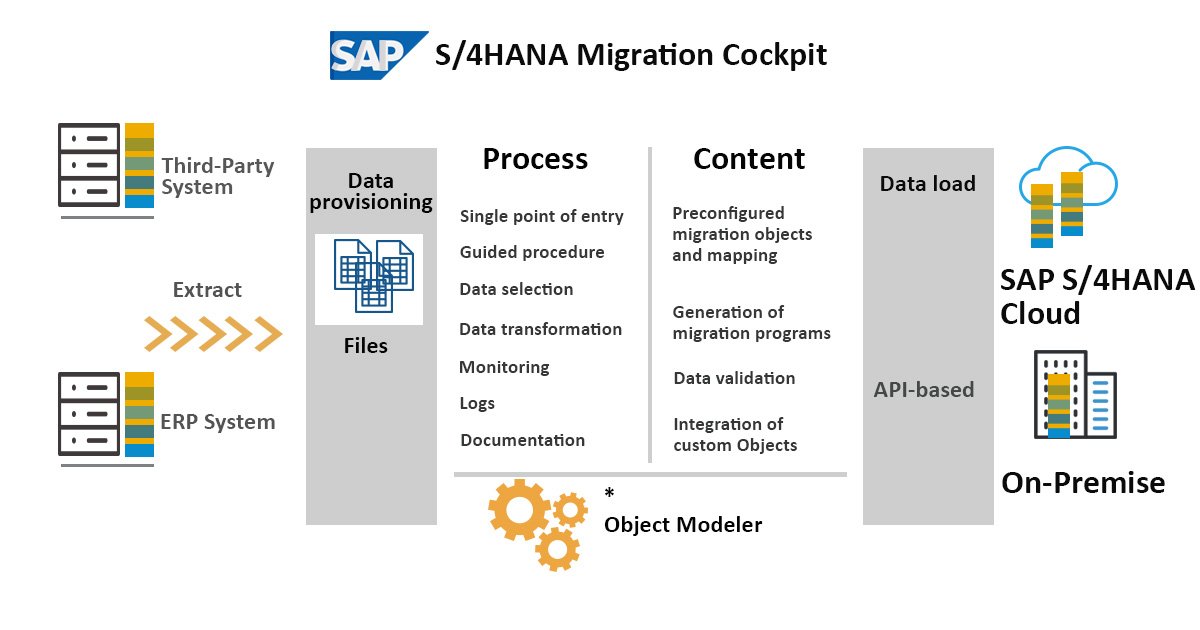
1.It is developed into the SAP S/4HANA system, and therefore no extra placements or arrangements are needed.
2. To load the legacy data, it uses uniform files; however it also incorporates the strategy to offer the capability to take out the data from ABAP based SAP source framework specifically.
3. The migration objects which are supported can be defined by SAP and can only be improved using Migration Object Modeler, i.e. MOM.
4. The SAP S/4HANA migration cockpit is accessible for both cloud and On-premise version, but it may differ concerning some abilities for example to alter data in the performance area.
SAP S/4HANA Migration Object Modeler (MOM): This is another tool which is provided in an on-premise version only. For the description of the migration objects, this tool can be observed as a design-time tool. It has improved skills which are building up each time and depends on the SAP S/4HANA edition. The following actions can be carried out with the help of this tool:
- Display the target structures: This activity provides a summary of the target structures. These are managed by the APIs which are utilized by migration objects to present the data to SAP S/4HANA.
- Edit Source Structure: With the help of this function you can alter the foundation structure and add a field according to the prerequisite.
- Edit Field mapping: This function helps to plot an innovative or an improved field from the source to the target structure.
There are some new highlights incorporated into the SAP S/4HANA 1610 such as integrated recently created objects this includes the custom and the standard objects of SAP which are not yet distributed, and the improved standard conveyed objects. The data can be transferred easily into custom-built application too, with the assistance of newly announced enhancement.
Rapid data migration with Data Service: Another data migration tool is SAP data services. The data service tool offers proficiency for data extraction, transformation and load, i.e., ETL, and also provide competencies for data quality management and text data processing. Utilizing this competency free of cost, however, a data services license is required for the data quality structures. This package also consists of a sample migration content in the form of a business partner, materials, etc.
The other Data Migration Tools:
Legacy System Migration Workbench (LSMW): LSMW is one of the migration tools utilized for data migration from legacy system to SAP framework and also from one SAP system to another. The different techniques such as BAPI or IDocs are also accessible as an extra import strategy for processing the legacy data. This method is used independently from a standard batch or direct input and recordings.
LSMW includes the following data migration steps:
1. Recite the data, i.e., the legacy data in spreadsheet tables.
2. Converting data from the source to the target format.
3. And importing data into the database.
In order to perform the above steps, the following steps should be carried out initially:
The first step is to define the source structure and then define the target structure, i.e., the SAP structure which receives data. Field mapping which includes plotting of data between the source and target structure and then states the location of the source file.
SAP Batch Data Conversion (BDC): This is another method of data migration in SAP, in which data is transferred using the batch input program and can be executed using a call transaction method or a session method. It helps to transfer a large amount of data entries related to the data entries from a legacy system to an SAP system. It works by automating the process of manual data transfer. In this method, only the data which relate to a single transaction is transferred initially with the help of a correct data format. It automatically moves all the outstanding data entries that run in various lines using the same data format. This entire process happens in the background and the data are transferred one by one as similar to the manual process. In this method, the data is transferred from legacy system to SAP system but not from the SAP system to a legacy system. There are two methods of batch data conversion one is call transaction method, and another is the batch input session method.
Any of these techniques can be used for data migration based on the scenario and the amount of data which is needed for the migration. There are around seventeen steps in LSMW, and it is a ready tool for master data migration. Whereas in BDC, session method is good to use due to its various advantages. Thus, according to the real-time necessities these methods can be utilized for data migration.
Register Now for Live webinar on SAP S/4HANA Simple Finance
Conclusion:
Therefore, for data migration in a SAP S/4HANA couple of imperative focuses should be considered. It is also required to realize that how you can increase the value of your SAP S/4HANA by impacting the data which is a crucial step in the digital travel. Well, there are different tools which are available for data migration. The usage of these tools makes the data migration process more comfortable. These tools are considered as a ready to use solutions which saves a lot of time for data migration.

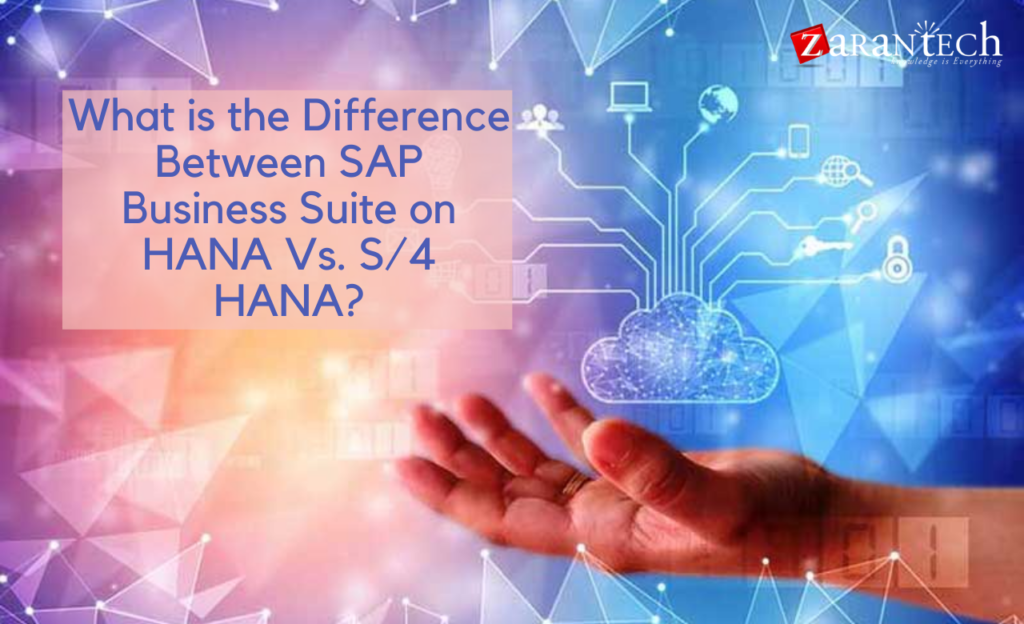
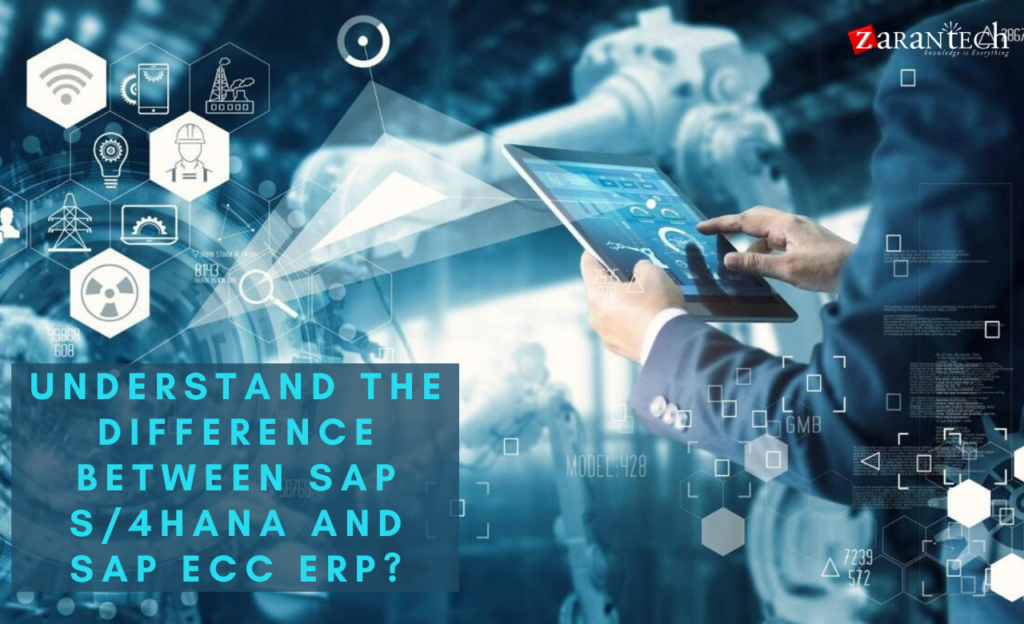
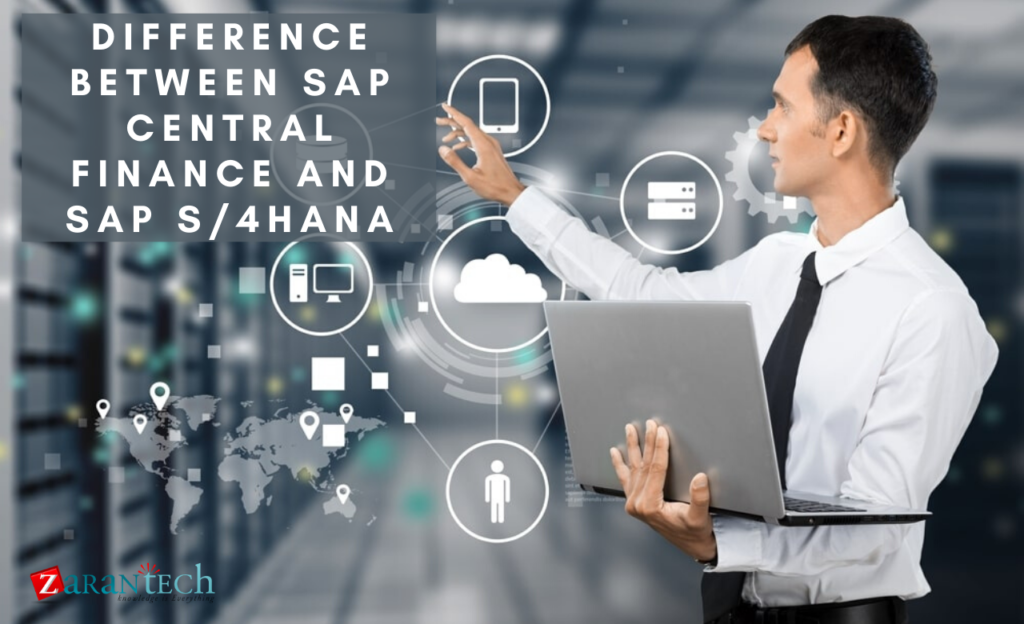
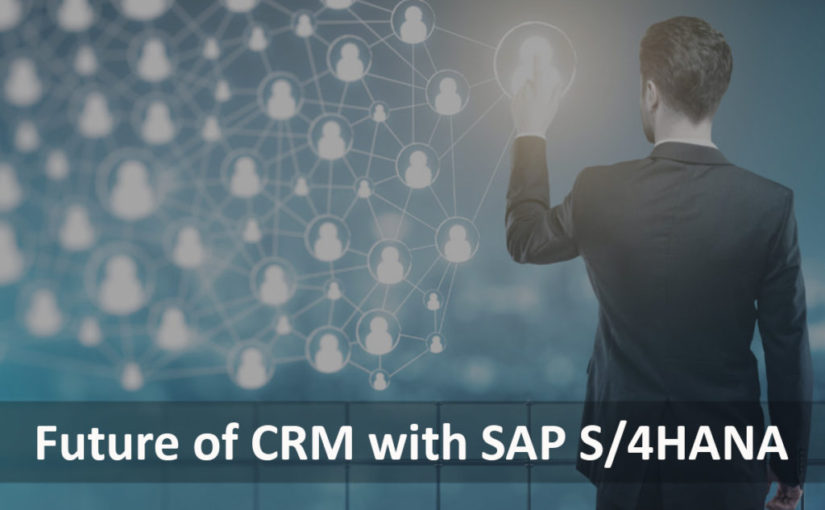
 99999999 (Toll Free)
99999999 (Toll Free)  +91 9999999
+91 9999999